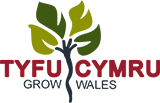
Key themes covered during the Study Visit have been summarised below:
Container production
Approximately 650,000 cutting are propagated in house annually on heated beds under low polythene tunnels within a glasshouse; concerns over plant health in recent years has seen an increase in the nursery’s own propagation.
Dalotia coriaria (previously called Atheta coriaria) is used to control Sciarid fly in propagation using the rearing system developed in AHDB projects.
The nursery has hosted AHDB funded trials work on peat alternatives (project CP 138) and has since undertaken large scale trials of key crops in peat free growing media. This, combined with a gradual reduction in the percentage of peat used in growing media will enable the nursery to achieve 60% peat reduced by 2023. A pot topper supplied by Klasman (loose fill mulch with a binding agent) helps to conserve moisture, reduce moss and liverwort, contributing to a slight reduction in weed pressure.
Taupe pots are used for stock destined for the retail market as the cameras used to sort plastics in kerbside recycling in the UK cannot handle black pots. Taupe pots are more expensive, so crops destined for the amenity market are still grown in black pots. Production is being standardised so all crops currently grown in a two-liter pot will be produced in a three-liter pot in future.
Water is collected and recycled from some nursery beds and is treated with Ozone to kill any water borne pathogens prior to re-use. The nursery has relied on boreholes for its main water source but has invested in and is currently constructing a reservoir to improve water security in the future.
Trees
Trees are sold bare root, root baled and as a containerised crop (grown in air pots to give air root pruning and a fibrous root system) and recent investments in beds have seen an increase in the number of containerised trees being offered. Some trees are root balled but due to the cost associated with the process root balling is only cost effective for larger stock.
Most trees are sold by their girth which is measured one meter above the ground. Girths are measured and each tree has a colour coded tag relating to its girth to streamline the dispatch process. The maximum girth offered is 18 – 20 cm. Multi stemmed trees are also produced however these are sold by height rather than girth. Wyevale is a major UK Quercus (Oak) grower.
Transplants
These are field grown on a bed system either from seed or a one-year-old, graded transplant. Undercutting is carried out to produce a nice fibrous root system. Irrigation is applied to transplants with rain guns however seedlings are irrigated with sprinklers as rain guns can result in the soil capping.
Fertiliser is broadcast over the crop in line with soil analysis / crop need however foliar fertilisers are also used.
The very mild autumn had delayed lifting of some species due to transplants being slower than normal to enter dormancy and starting to shed leaves. Lifting was underway and a team of 6 staff with two tractors had lifted 85 pallets of stock in two days. Stock is graded prior to sale and is either cold stored or heeled into the field prior to sale.
Deer are becoming an increasing problem as numbers increase and deer fencing is planned to minimise the incidence of crop damage.
